For a while I’ve been wanting to create a pallet wall but what has stopped me is I wasn’t sure where to create the wall but mostly all the collecting and dismantling of the pallets. At work we were brainstorming ideas for a backdrop for a video series we are going to do so it was a perfect opportunity to try it out. The process to create the faux distressed wood was pretty easy so I thought I’d write my first tutorial on how to do it.
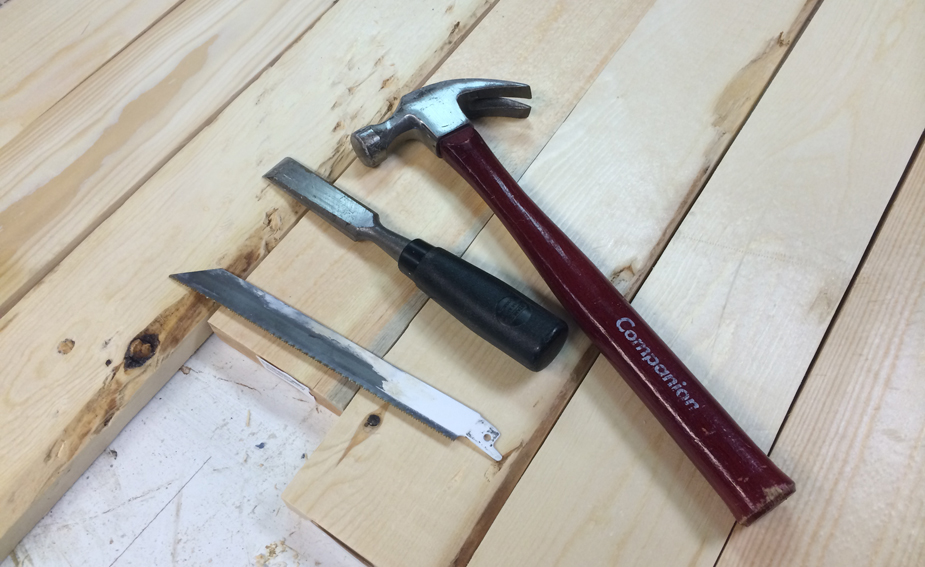
Before you begin, you’ll want to grab a hammer, chisel, and/or anything that looks sharp from your tool box like screw driver, paint can opener, old saw blades. You can also grab some nails and screws and put them in a Ziplock bag (grab a couple of bags because they will get holes in them pretty quick). Once you have all of your tools and materials…it’s time for the project.
Step 1.
Lay all of your pieces out next to each other. If your wood has nice crisp edges, take a sander (or sandpaper 220 grit) to them until you get a soft edge. There isn’t a science to this part, just knock down some of the edge so that the wood doesn’t look like it came from a box store.
Step 2.
Take your bag of screws, hold them a foot or so above the material and drop them on the wood. (If you have kids, this is a good part to get them involved). Drop, rub, throw the bag on the wood so that it creates dents and scratches on the planks of wood. At this point you can take any of the sharp items and do the same. I took my hammer and paint can opener and randomly hit and gouged the wood to create a more dramatic look in some areas. Once you’ve gotten all the aggression out and your kids are hyper, it’s time to send them back into the house 😉
Step 3.
With a rag, spread the stain on 1 piece at a time. The longer you leave the stain on the wood, the darker the final piece will be. After the first coat dried, I went back and gave some pieces a second coat. On the picture above, I used various coats to create the pieces but all of them (excluding the top right) are all coated with the same color stain. Remember that inconsistency is ok and is preferred here. Here is what my pieces looked like after I was completed.
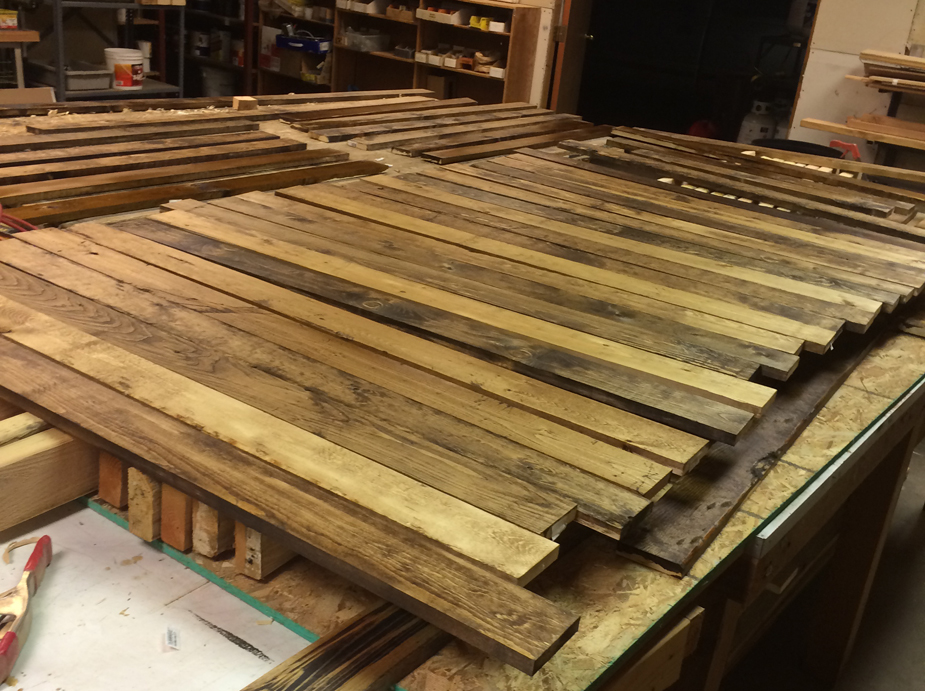
Step 4. (optional)
After the wood was dry, I laid all of the pieces out to see what they would look like and see how the seams would come together. Because most of the pieces were the exact same size, I cut the wood pieces in random widths so I would get more of an inconsistent look when I put the wall together.
Step 5.
Start at the top right of your wall, make your first row level and begin nailing into your wall.
Here is what my wall turned out like (sorry for the bad photo)
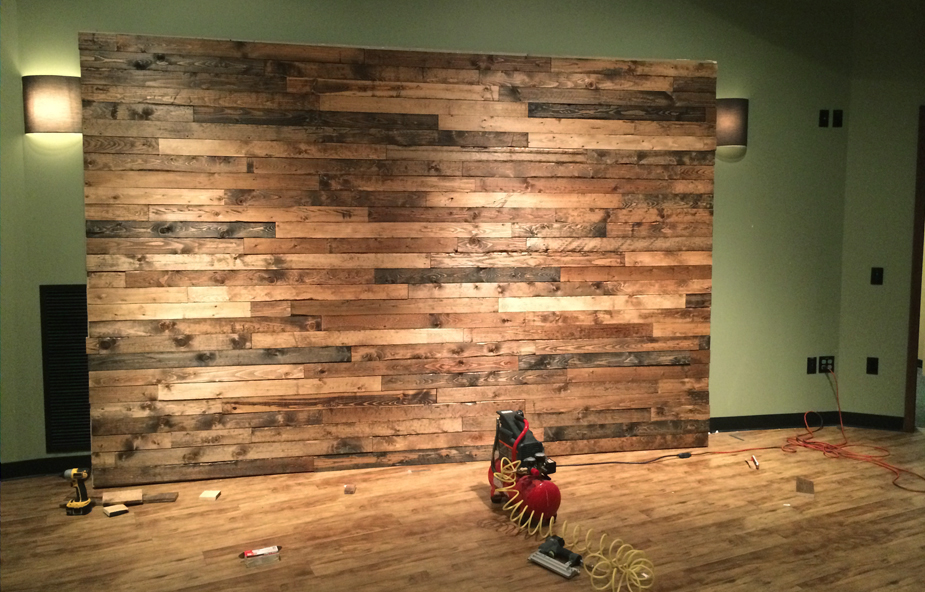
I hope this tutorial helps you on your next project!
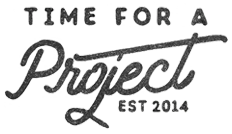
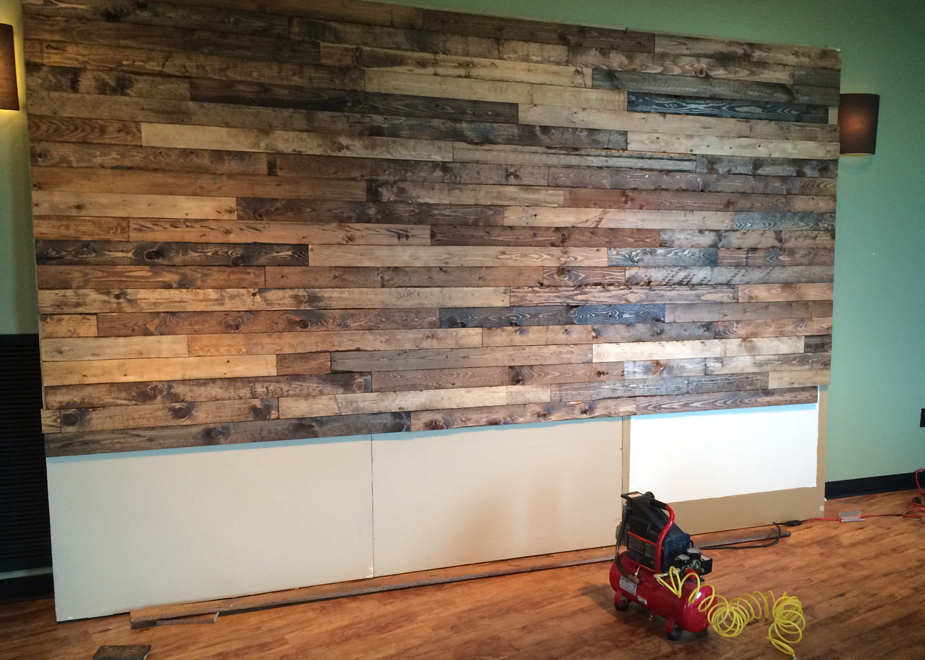
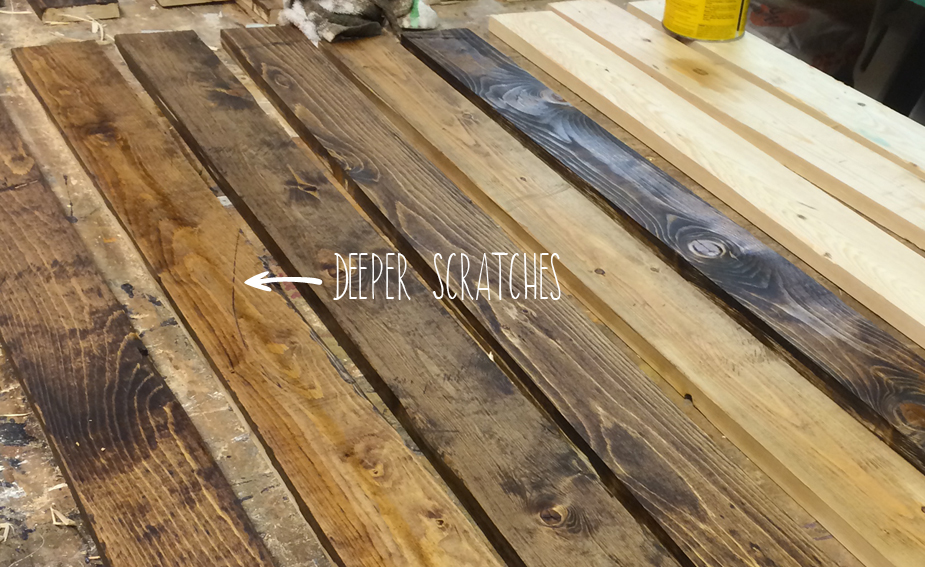
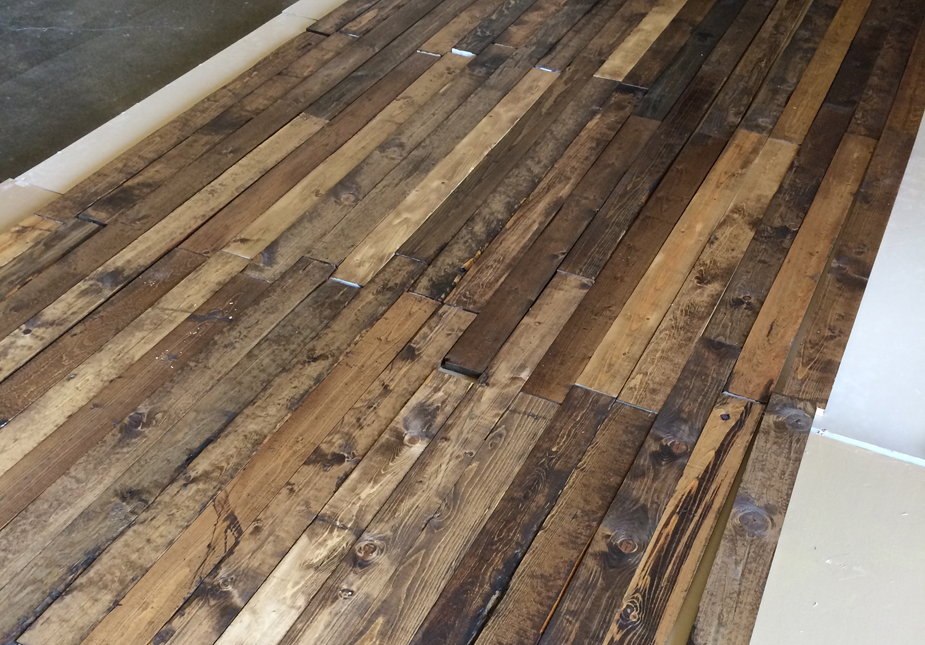
6 Responses to How to Distress Wood & Create a Faux Pallet Wall